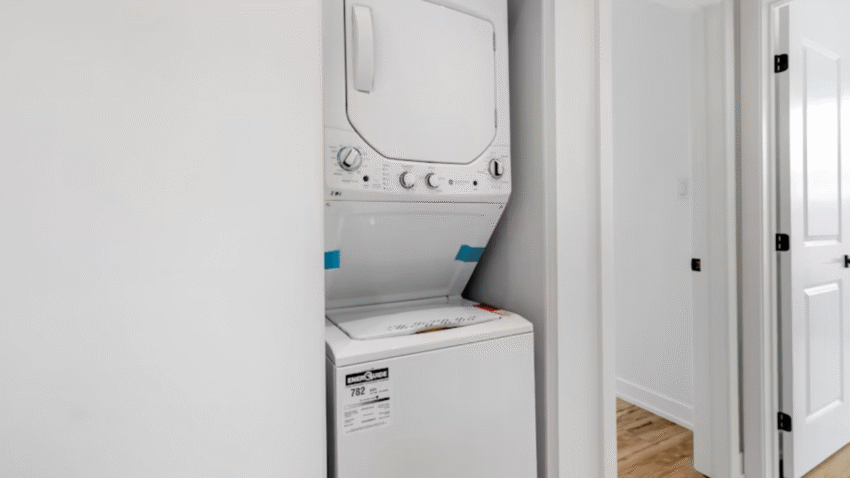Introduction
Laundry baskets are one of the most-used items in a household. From carrying heavy loads of clothes to being bumped and dropped, they take a lot of daily wear and tear. Over time, cracks, broken handles, or loose frames can make them less functional. But instead of buying a new one, you can often restore it to full use with a few simple fixes. Learning how to repair laundry baskets instead of replacing them will save you money, reduce waste, and keep your laundry routine running smoothly.
Why Repairing Laundry Baskets Makes Sense
Repairing instead of replacing has multiple benefits:
- Saves money – A repair can cost a fraction of a replacement.
- Reduces waste – Keeps plastic and other materials out of landfills.
- Extends product life – You can get several more years of use from a basket.
- Eco-friendly – Reduces the demand for new manufacturing and packaging.
- Practical – Quick fixes can be done at home with basic tools.
Whether your basket is plastic, wicker, or fabric, there’s usually a repair option that can restore it to working order.
Step-by-Step Guide to Repairing Laundry Baskets
1. Identify the Material and Damage
Before starting, check:
- Material: Plastic, wicker, metal frame, or fabric liner.
- Damage type: Cracks, holes, broken handles, loose stitching, or bent frame.
- Severity: Small cracks are easier to fix, while severe damage may need reinforcement.
2. Repairing Plastic Laundry Baskets
For Small Cracks
You’ll need: Strong duct tape, sandpaper, and a cloth.
- Clean the cracked area with soap and water, then dry it.
- Lightly sand the edges to help the tape stick better.
- Apply duct tape to the inside and outside of the crack for added strength.
For Larger Cracks or Holes
You’ll need: Zip ties or a plastic repair kit.
- Drill small holes along both sides of the crack.
- Thread zip ties through the holes and pull tight to “stitch” the crack closed.
- Trim off the excess tie ends.
Pro tip: For a smoother finish, use a plastic welding kit to melt the edges back together before reinforcing with zip ties.
3. Repairing Wicker or Rattan Laundry Baskets
Loose or Broken Weave
You’ll need: Replacement wicker reed, hot water, and scissors.
- Soak replacement reed in hot water for 30 minutes to make it flexible.
- Weave the new reed into the damaged area, following the original pattern.
- Trim any excess and tuck ends securely.
Loose Frame
You’ll need: Wood glue and clamps.
- Apply wood glue to any loose joints.
- Clamp in place until the glue dries completely.
4. Repairing Fabric Laundry Baskets
Torn Fabric Liner
You’ll need: Needle, thread, and scissors.
- Turn the liner inside out.
- Stitch the tear using a backstitch or whipstitch for strength.
- If the fabric is worn thin, sew a patch over the area for reinforcement.
Loose Frame Support
You’ll need: Pliers and strong fabric glue.
- Use pliers to straighten any bent metal parts.
- Apply fabric glue where the frame meets the liner for extra stability.
5. Fixing Broken Handles
Plastic Handles
- Drill small holes on both sides of the break.
- Thread zip ties or wire through and pull tight.
- Wrap with duct tape for comfort.
Wicker Handles
- Replace the broken section with new reed or twine, wrapping tightly around the handle area.
Fabric Handles
- Reinforce by sewing additional layers of fabric or webbing over the damaged area.
6. Reinforcing Weak Baskets
If your basket is structurally weak but not yet broken:
- Plastic baskets: Add a crosshatch of duct tape to the bottom for extra support.
- Wicker baskets: Use clear wood glue on joints to prevent loosening.
- Fabric baskets: Insert a cardboard or plastic base inside to prevent sagging.
Common Mistakes to Avoid
- Using Weak Adhesives
Ordinary glue often won’t hold on plastic or wicker—use materials designed for the specific surface. - Ignoring the Edges of a Crack
Cracks spread if not reinforced—always secure edges firmly. - Skipping Cleaning Before Repair
Dirt or residue prevents adhesives and tape from sticking properly. - Over-Tightening Zip Ties
Can cause further cracking—pull snug, not overly tight. - Using Patches That Aren’t Durable
Thin fabric patches on high-stress areas will wear out quickly—choose strong materials.
Extra Laundry Tips & Hacks
- Rotate Your Baskets – Using different baskets for different laundry loads reduces wear on any one basket.
- Don’t Overload – Heavy loads stress handles and frames.
- Store Indoors – Sunlight and humidity can weaken materials over time.
- Use Basket Liners – Protects wicker and fabric baskets from snags and stains.
You might also enjoy our guide on How to Reduce Dryer Sheet Waste Easily, which fits perfectly with this theme of extending the life of laundry tools and accessories.
Conclusion
Repairing laundry baskets is a simple, money-saving habit that also benefits the environment. Whether you’re mending a cracked plastic basket, weaving a broken wicker section, or sewing up a fabric liner, these fixes can add years to the life of your laundry gear.
📌 Extra Tip: Keep a small “basket repair kit” in your laundry room with duct tape, zip ties, glue, and a needle and thread—you’ll be ready to handle small issues before they turn into big problems. Bookmark this guide so you can reference it whenever your baskets start to show signs of wear.
